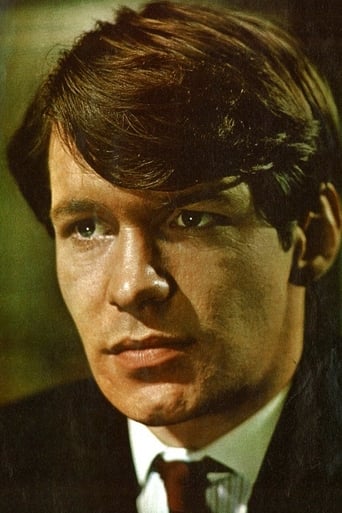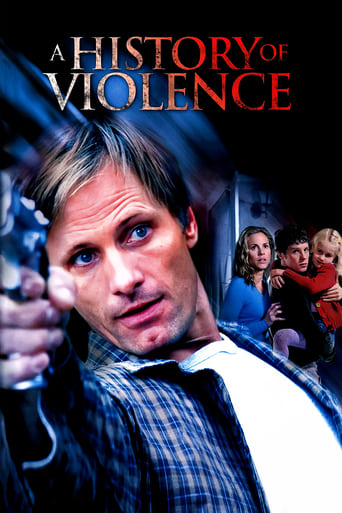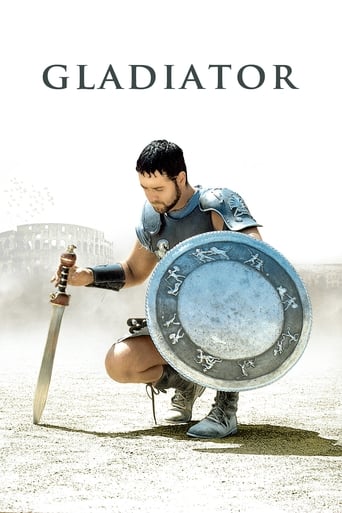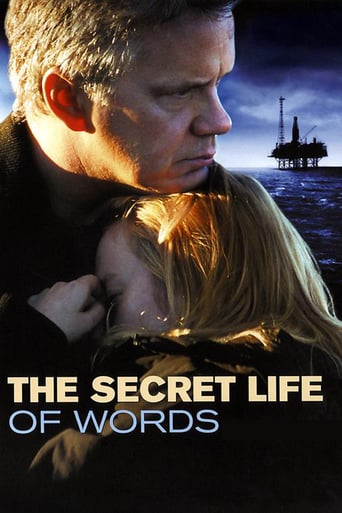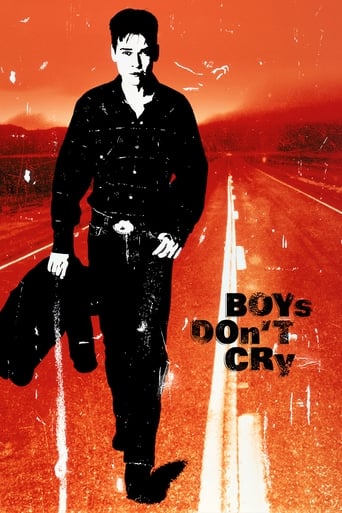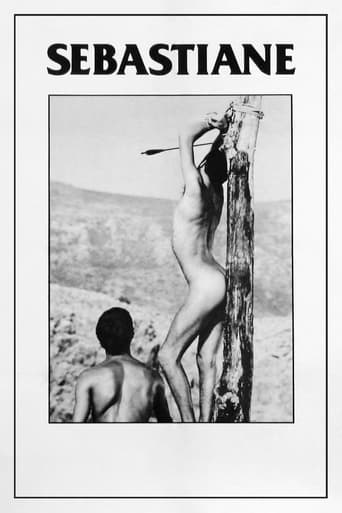

Sebastiane (1976)
Rome, AD 303. Emperor Diocletian demotes his favourite, Sebastian, from captain of the palace guard to the rank of common soldier and banishes him to a remote coastal outpost where his fellow soldiers, weakened by their desires, turn to homosexual activities to satisfy their needs. Sebastian becomes the target of lust for the officer Severus, but repeatedly rejects the man's advances. Castigated for his Christian faith, he is tortured, humiliated and ultimately killed.
Watch Trailer
Cast


Similar titles
Reviews
What a waste of my time!!!
Most undeservingly overhyped movie of all time??
Best movie ever!
The film's masterful storytelling did its job. The message was clear. No need to overdo.
This film is not a religious film. But this film is not an anti- religious film. This film is about the rejection of a group of men banned out of society to some outlandish deserted area and what happens among them who have nothing to do and are under the command of an officer who is banned exactly the same way. First they are obsessed by sex since it is the main human activity they cannot have, at least in a normal heterosexual way. So they live that sexual obsession in jokes, in some brutality, in some dreams or some homosexual surrogate activities. But even so hunting a wild pig and killing it, having fake fights with wooden weapons are definitely not enough to satisfy their frustrations and their desires. If you are the officer you can order one simple soldier to satisfy your sexual impulse, but otherwise we are in a plain case of playing or raping. The film, apart from showing the homosexual relation between two soldiers reveals the fact that there are two Christians in the group and they are taken as scapegoats. One of them is Sebastian and he is tortured by the officer and by the soldiers because he refuses to fight because Christians do not fight. The officer takes a great pleasure in whipping him, torturing him day and night, tying him down in the sunshine for hours, trying to force him to accept to let him make love to him, and strangely enough he does not rape him though Sebastian refuses to service him. The soldiers do not touch him because he is the officer's prey, toy, possession. But they get even with the second Christian they torture physically just because he is a Christian. That is segregation and racism, hostility based on pure and simple religious rejection. The person who is not like you, who is different from you is a natural prey to your frustrations and compensations of these.Then the killing of Sebastian the way it is known in Catholic and Christian folklore is of course staged by the officer who makes each man shoot one arrow at Sebastian and even the second Christian is forced to shoot his own arrow, and Sebastian is abandoned to die of his wounds in the sunshine. But the film is targeting a far more important and universal theme. Anyone who is different is the potential victim of such persecution, and Derek Jarman is of course speaking of men who are gay in our society, at least in his society in 1976 and how they were rejected, ostracized, violated, raped, brutalized and even persecuted by the police. And beyond this sexual segregation the human species, hence humanity, has always cultivated segregation, persecution and apartheid against those they classify as different. The human species, hence humanity, is a segregative species. This is a deeply pessimistic vision but the evolution on such a subject is slow, very slow, and can take two steps forwards and three or four backwards just afterwards. The most fascinating and strongest aspect of the film is the way Derek Jarman show suffering as being a beautiful experience. Sebastian transforms his torture into a direct contact with Jesus and God. He transforms the sun into the kiss of God. He finds his love in his being tortured, but his love goes to Jesus and God because his suffering is the proof of Jesus's and God's existence: they exist because he believes in them and because he is made to suffer because of this belief. His suffering casts his belief in bronze and Jesus and God in gold. Then the plastic beauty of these bodies mostly nude or quasi-nude is just the mirage that Derek Jarman sends into our minds and our eyes: the mirage that the film is only about the beauty of male bodies, these bodies that are nothing but vanity because the only important thing is not the bodies of these men but their moral or ethical integrity, and then life and death are like the two sides of the same coin when you are a Christian. Life is dedicated to longing for death to rejoin the company of Jesus and God. And death is the escape door from the limited and locked up physical life into the eternal life of the soul in communion with God and Jesus, in absolute union with them. When we finally reach that understanding, that deep communion with man's spiritual dream and project, the fact that they are in the nude, undressed does not count any more We do not see it any more, or we do not feel any appeal in that nudity.That's the real project of Derek Jarman: to make us reach beyond erotic or pornographic voyeurism to lift our souls and minds to the contemplation of purity in the midst of total perdition and sacrilege, perdition of human integrity and sacrilege of human perversity. This film should thus not be restricted because it is the most beautiful lesson of visionary enlightenment.Dr Jacques COULARDEAU
Derek Jarman was, like his contemporary Peter Greenaway still is, a visual artist working in film. The usual obsessions of the movie industry didn't occupy him overmuch. Psychology, character development, narrative, plot - all those were secondary considerations, if they were considered at all. The main preoccupation was the expressive power of the the image. To those of us reared on conventional, industrial cinema, this makes Jarman's (and Greenaway's) work both refreshing and frustrating in equal measure. SEBASTIANE is not, then, a conventional film. It would be misleading to assess it in conventional terms. At times it is jokey, revelling in its low budget and independent spirit. At other times, it is so beautiful it takes your breath away. And at other times it seems to crawl along, with dull acting beneath a luxuriously blue Sardinian sky.Leonardo Treviglio is a stunning, intense Sebastian, a Renaissance painting come to life. As his tormentor Severus, Barney James successfully conveys frustration and bewilderment behind his icy-grey eyes. Richard Warwick (probably the best known actor, having made a mark as one of the young rebels in Lindsay Anderson's IF...) is quietly impressive as Sebastian's only friend in the outpost. A lot is required of Neil Hamilton as the gruff Maximus, which is a pity because he is unconvincing enough to be a distraction. Personally, I think SEBASTIANE succeeds as a cinematic study of the isolation at the centre of martyrdom. It doesn't indulge in psychological speculation. It simply depicts some of the temptations, struggles, and sufferings involved. The sensuality of the lives of the other soldiers is at odds with the kind of life Sebastian wants to live. Jarman and his co-director (and editor) Paul Humfress show all this with great clarity.However, one of the side-effects of such clarity is emotional detachment. We watch as if the film were an installation in an art gallery. Nothing wrong with that, as long as you remember that's what you're looking at. Otherwise you might emerge from SEBASTIANE thinking that it's a failure, a halfway-house between an art-film and a porn-movie. For me, though, it's pretty successful on its own terms. And because it was a pioneering piece of film-making in other ways (Latin dialogue, gay lovemaking, self-conscious anachronisms), SEBASTIANE will always have a place in cinema history.
Despite not having grown up with Catholic iconography, as a gay man I knew that the paintings of St. Sebastian's martyrdom were considered by some to have homo erotic appeal. I have had to consult a saint's dictionary to find out exactly who the saint was, what he did, and why he's revered. The facts have little relevance to this film.Jarman's Sebastiane seems to be an imagined back story of how homo eroticism might have come to be associated with the saint's imagery. The story's framework gives Jarman an opportunity to incorporate big themes into the film: persecution, alpha males, authority, love, unrequited love, devotion, loyalty, idealism, morality, and group dynamics. Religion, not so much. These themes are not editorialized, necessarily, other than being woven into the daily lives of a small group of Roman soldiers living in an isolated outpost.While Sebastiane's Christianity is the reason he is persecuted by his comrades, Sebastiane does not evangelize. His Christianity, in the few instances he articulates it, seems to be a jumble of spiritual and erotic love for the Christian god and the god Apollo. Sebastiane's ideals also seem to be somewhat muddled. After a lengthy group training session with mock sword fights, he throws down his weapon and declares that Christians don't fight. His participation in the practice fight and his sudden refusal to continue don't make any logical sense; perhaps the scene is meant to be a metaphor for a gay man refusing to act straight any longer.The whole movie is, of course, somewhat of a rumination about what it means to be a gay man and outside of the mainstream of male sexuality. It acknowledges that being male includes same sex activity, but it also makes it clear that exclusive same sex activity, especially if there is sentiment attached, is considered aberrant. In other words it's okay for straight males to screw each other, but it's not okay for them to love each other.The film is often cited as an exercise in self-indulgent eroticism, and I'd agree it leans in that direction. The naked men are not hard to look at, especially the extraordinarily sexy Ken Hicks. There is a long slow-motion scene of him frolicking with his lover that would not be out of place as an introductory sequence in any '70s gay porn movie. I can understand intellectually why it deserves to be included, but I think the film would have been stronger--and taken more seriously--if those kinds of scenes had been minimized.I found the end of the film somewhat unsatisfactory. Sebastiane's martyrdom looks more like target practice than an execution. I think that Jarman's having each soldier in turn shoot Sebastiane with an arrow was meant to symbolize something, but whatever it was eluded me. By stretching it out, the scene lost its power. I suppose it was done that way to emphasize the origin of the familiar homo erotic imagery of the saint, but it didn't feel right to me.This film is required viewing for any student of gay cinema.
It's surprising more comments haven't been posted for this production which, at the time of its original release, created quite a stir. Perhaps the film's failure to create a continuing subgenre of imitators is to blame, but then, that makes it a one-of-a-kind effort and efforts of this sort deserve remembering as well.Looking back on the film from more than a quarter of a century, it seems clear that normal criteria concerning story, dialog, and character simply don't apply here. Instead, one must simply view it as a feverish, almost hallucinogenic fantasy drenched with homoerotic, sadomasochistic imagery that is played out against a sun-drenched dreamscape on the Sardinian coast. Think of it as a high-class photo shoot for an avant-garde fashion magazine specializing in loincloths and Roman military paraphernalia.Having the dialog spoken in Latin can be dismissed as a "gimmick" but actually it adds to the film's air of mystery and unreality. If only some of the anachronisms could have been avoided!Considering the possibilities, there's surprisingly little sex here, though it's a subject often discussed and, indeed, the whole film is imbued with an air of desire and yearning. On the other hand, there's a plethora of bondage and torture. Leonardo Treviglio, who plays the title character and who spends most of the movie in no more than a loincloth, is hanged by his wrists and flogged, burned with a flame, staked out spreadeagle-style under the scorching sun, and finally shot full of arrows. Curiously, his most memorable torment is also the simplest. Barney James, playing the commanding officer who's torn by conflicting emotions, takes a handful of sand and grinds it into Treviglio's bare torso, blurring the lines between pleasure and pain, between lust and longing. It's a memorable moment in a movie that is now half-forgotten ... like one of those dreams which fade from the mind after you awaken, even though you try to recall the details.



